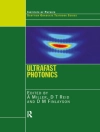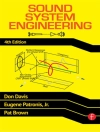The nuclear crisis in Fukushima and growing threats of nuclear terrorism must serve as a wake-up call, prompting greater action to prepare ourselves for nuclear and radiological disasters. Our strategy to prepare for these threats is multi-layered and the events of these past years have proved the necessity to re-evaluate the national and international preparedness goals on a scale never before considered.The programme of NATO Advanced Research Workshop on “Preparedness for Nuclear and Radiological Threats” has been focused on science and technology challenges associated with our need to improve the national and international capacity and capability to prevent, protect against, mitigate the effects of, respond to, and recover from the nuclear and radiological disasters, including nuclear and radiological accident, terrorist attack by Improvised Nuclear Device (IND) or by “Dirty Bomb”-Radiological Dispersal Device (RDD), that pose the greatest risk to the national and international security and safety.
Tabella dei contenuti
Part 1: Response and Recovery.- Preparing for the Aftermath of a Nuclear Detonation: an Analytic Framework for Disaster Management; B. Buddemeier, N. Suski.- Response Tactics for the First 100 Minutes after the Outdoor Detonation of an Explosive Radiological Dispersal Device; S. Musolino et al.- Operational Framework for Recovery from an Attack Involving a Radiological Dispersal Device/Improvised Nuclear Device; E. Raber et al.- Responding to Nuclear Terrorism: Is Training of First Responders at Sites of Nuclear Disasters Enhancing their Preparedness for Incidents Involving Nuclear and Radioactive Material?; D. Rothbacher et al.- Urban Response to CBRNE: Multi-Service, Multi-Jurisdictional, Complete Response to Terror Events; G. Gelineau.- Armed Forces Radiobiology Research Institute: R&D, Training, Crisis Response. Accomplishments, Opportunities and Policy Questions; Mark Whitnall.- Part 2: Detection and Protection.- Rad/Nuc Detection Standards and Conformity Assessment Program; P. Chiaro Jr.- New Opportunities of Portal Monitors with Plastic Scintillation Detectors (Asia-New. New Advanced Source Identification Algorithm); A. Stavrov, E. Yamamoto.- Mobile Units for Characterization of Contaminated Sites; T. Streil, V. Oeser.- Real-Time Isotope Identification and Mapping Capabilities of the U.S. Environmental Protection Agency’s Airborne Spectral Photometric Environmental Collection Technology; J. Cardarelli et al.- Radnet National Air Monitoring Program; R. Fraas.- Radiological Emergency Response and Preparedness at the Remote Sensing Laboratory; S. Mukhopadhyay, R. Maurer.- Evaluation, Improvement and Guidance for the Use of Local-Scale Emergency Prediction and Response Tools for Airborne Hazards in Built Environments. Cost Action Es100 – A European Experience; T. Reisin et al.- Part 3: Prevention and Mitigation.- Focusing on the Threats to the Detriment of the Vulnerabilities: A Vulnerability Assessor’s Perspective; R.G. Johnston.- Preventing, Controlling and Mitigating Radiological Consequences; M.A. Do Amaral et al.- Nuclear Preparedness through a National Pre-Event Public Information Campaign; R.M. Levin.- The Romanian Management System for Nuclear and Radiological Emergencies; M. Mihaila.- Part 4: Radiation, Associated Risks and Public Health.- Initiative to Enhance Radiological Resilience; K. Vetter.- Societal Consequences of Nuclear Accidents; A. Liland.- Another Cost of 9/11; C. Kessler.- Assessment of Dose and Risk for Public from Potential Exposure Using WINMACCS and JRODOS Codes; A. Dvorzhak et al.- Novel Approaches to Radiation Diagnostics for Population Screening and Incident Triage; M. Mcneely.- Radiation Injury Treatment Network: A Model for Medical Preparedness for a Mass Casualty Radiation Incident; C. Case Jr., C. Mueller.- Radiation Dose Assessment by Using Lymphocyte Counts; S. Hu et al.












